Sourdough Scones
Sourdough Scones have a special flavor and the perfect scone texture. A proper scone should neither be too biscuit-y nor too muffiny, but should fall somewhere between the two. A little sourdough discard is all you need to make the best scones ever.
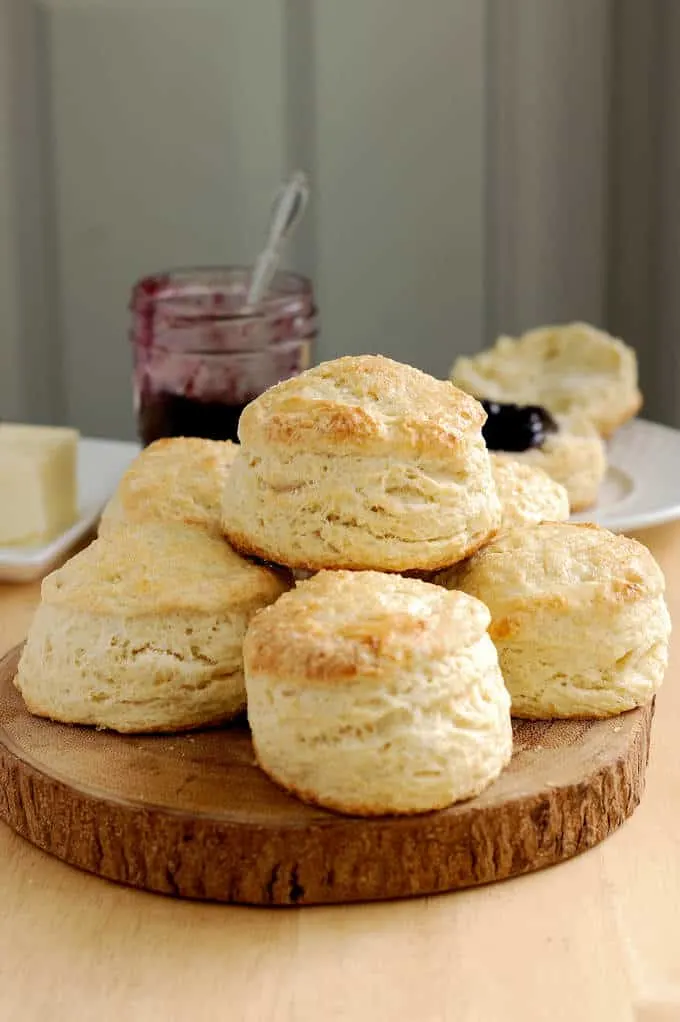
As I mentioned in my post for English Scones, my basic scone recipe is adapted from a recipe given to me by a British mum. I used that recipe for 7 years when I worked in a British tea shop.
I made adjustments to the original recipe so it could work in a US kitchen with US ingredients and measurements. I can tell you I get great feedback from everyone who tastes these scones.
Now, I’ve made these scones even better by adding a little sourdough discard to the recipe.
If you don’t already have one, I can show you how to make a sourdough starter and how to feed a sourdough starter.
How to make Sourdough Scones
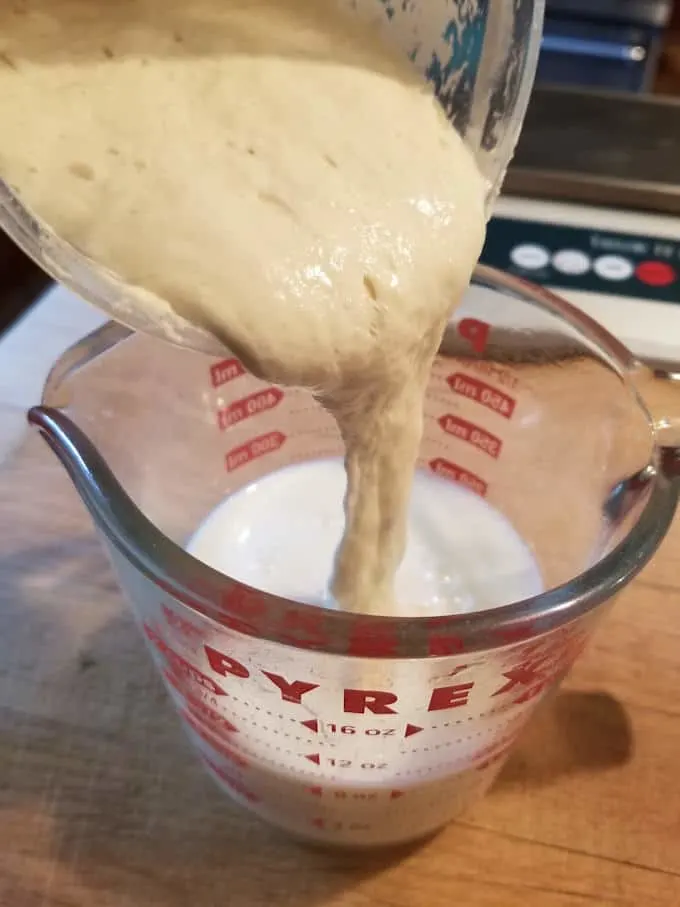
- Mix the sourdough discard into the buttermilk.
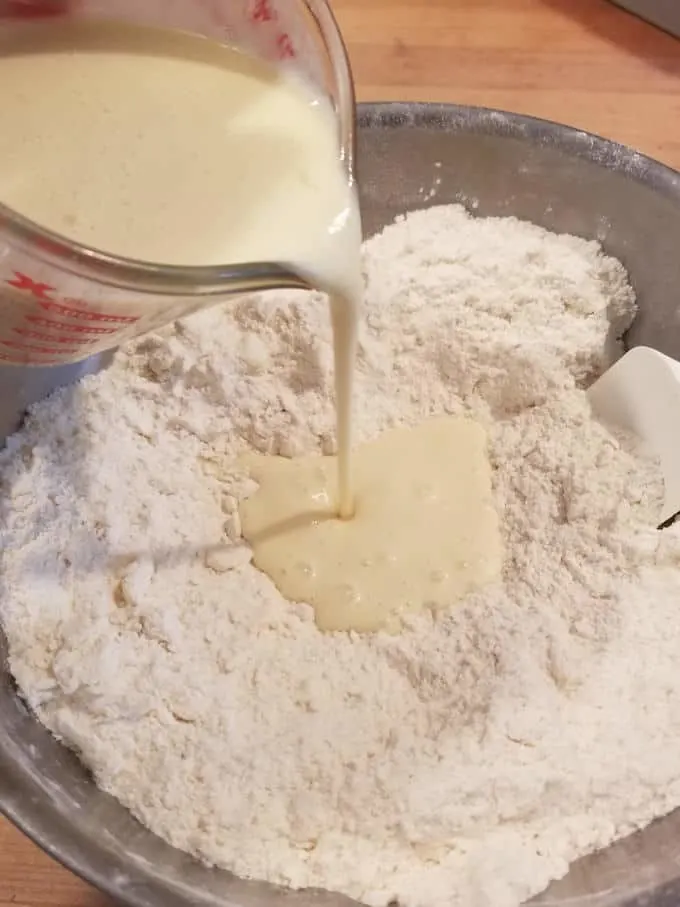
- Pour the buttermilk & discard into the flour base.
- Toss until almost combined
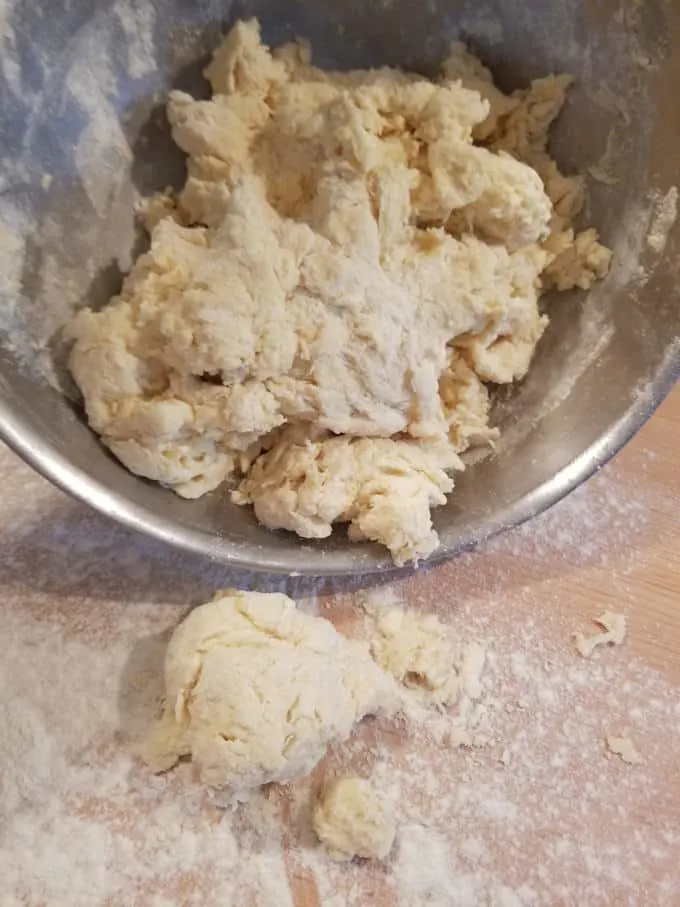
- Turn the dough out onto a floured surface.
- Knead a couple of times to bring the dough together.
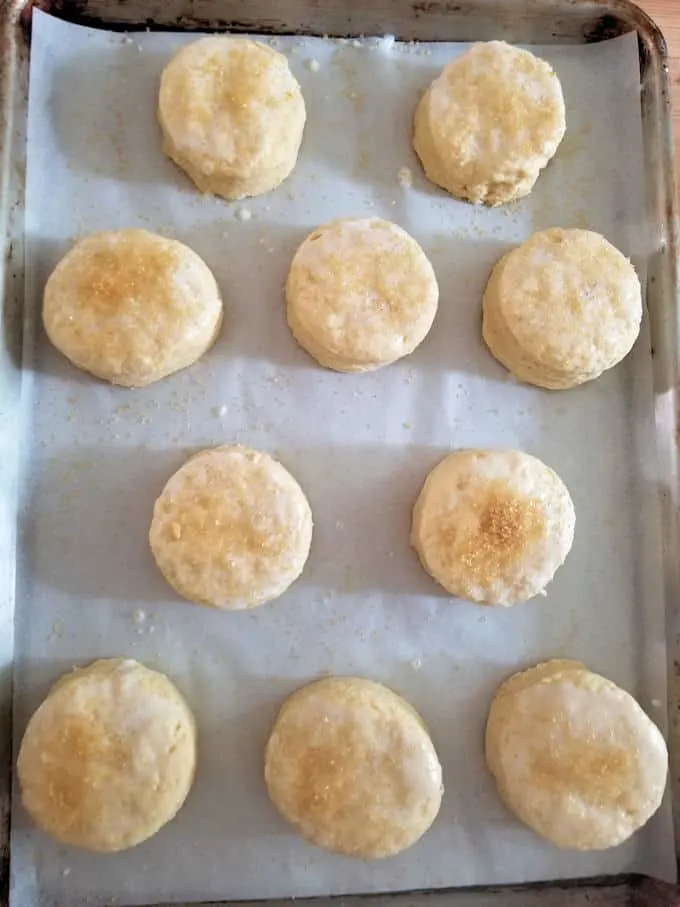
- Brush the scones with buttermilk and sprinkle with sugar before baking.
- Bake until the scones are golden brown.
Pastry Chef Tips for making Sourdough Scones
- Use real buttermilk if you can. The tangy flavor and tenderizing acidity works perfectly with the sourdough discard to make these the best scones ever. Buttermilk substitutes will work, but the real thing gives the best flavor.
- Mix the dough by hand. Mixing by hand ensures that you won’t over mix the dough and form too much gluten.
- Pat the dough by hand instead of using a rolling pin. This also ensures that the dough won’t be over worked.
- To work ahead, mix the recipe until the point where you add the buttermilk. Later you can mix the dough, roll, cut and bake.
Storage
Scones are best the day they are baked. Leftovers can be frozen for up to 3 months. Defrost and then warm in the oven to get the best texture. Do not refrigerate scones.
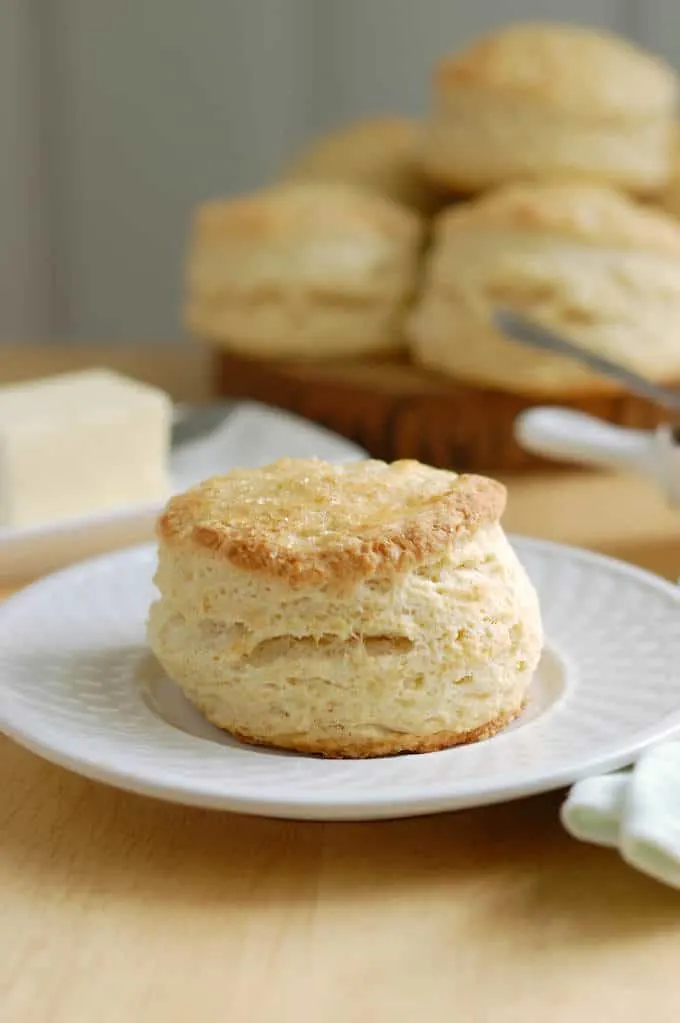
I know you hate to throw away that sourdough discard. Check out these recipes that use sourdough discard.
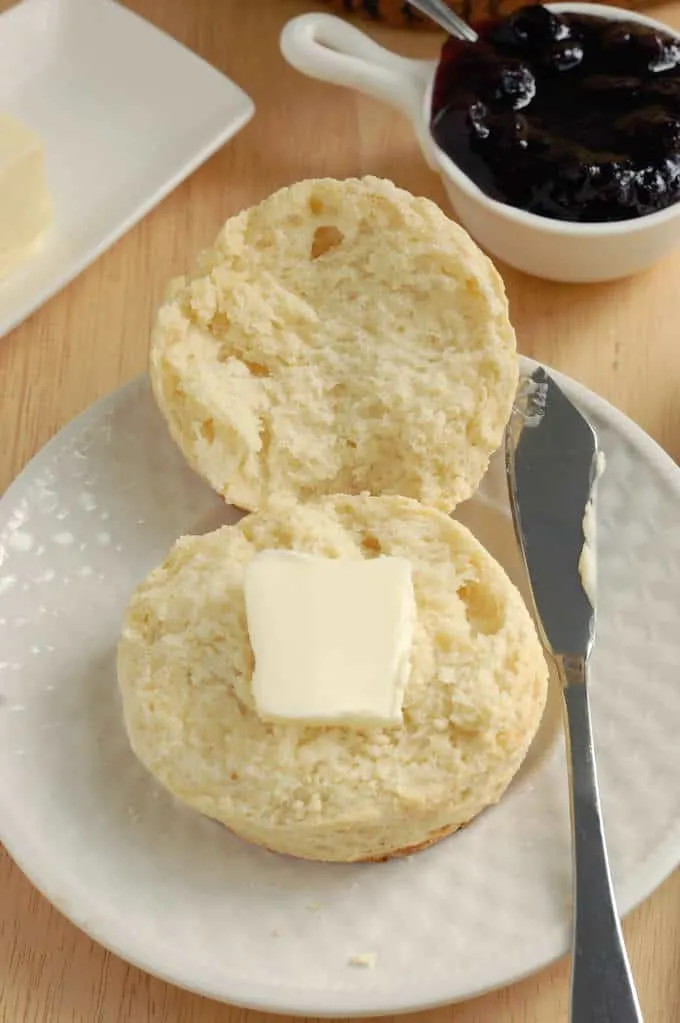
If you love this recipe as much as I do, I’d really appreciate a star rating and a quick comment. Ratings and comments help my recipes show in search results. Thanks!
Sourdough Scone Recipe
Ingredients
- 22 ½ oz unbleached all purpose flour ( 4 ½ cups, see note)
- 2 tablespoons baking powder
- 4 oz granulated sugar (½ cup)
- 1 teaspoon salt
- 6 oz unsalted butter (cold, cut into 1″ chunks)
- 8 oz buttermilk (1 cup)
- 8 oz sourdough discard (1 cup)
- 2 eggs
- Demerara Sugar for sprinkling
Instructions
- Preheat the oven to 375 °F. Line two ½ sheet pans with parchment paper or a silicone baking mat.
- In a large mixing bowl, whisk together 22 ½ oz unbleached all purpose flour, 2 tablespoons baking powder, 4 oz granulated sugar and 1 teaspoon salt. Toss in 6 oz unsalted butter chunks. Mix in the butter until the bits are the size of a pea.
- Whisk together 8 oz buttermilk, 8 oz sourdough discard and 2 eggs. Add the buttermilk mixture to the dry ingredients all at once and mix until just barely combined. Some loose flour may remain at the bottom of the bowl. DON'T OVER MIX.
- Dump the dough onto a floured surface and finish kneading by hand just until all the loose flour is absorbed. Use your hands to pat the dough until it is ¾" thick. Use a 2½"-3" biscuit cutter to cut scones. Re-roll the scraps and continue cutting until all the dough is used.
- Line the scones onto the prepared baking sheet, leaving 1" space between. Brush the tops of the scones with buttermilk and sprinkle with Demerara or granulated sugar.
- Bake on the middle racks of the oven, flipping the trays after 10 minutes (see note). The scones are ready when they are golden brown and sound hollow when the bottom is tapped. Total baking time 15-20 minutes.
Would you like to save this recipe?
As an Amazon Associate and member of other affiliate programs, I earn from qualifying purchases.

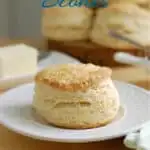

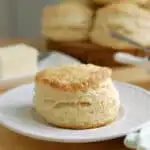





I’d like to make cheese scones, would this recipe work if I leave the sugar out? How much cheese would you recommend?
I have a great cheese scone recipe that’s based on the same original recipe as this one. You can follow the cheese scone recipe with the following changes – reduce the buttermilk to 1 cup, reduce the flour to 4.5 cups and add 8 oz (1 cup) sourdough discard.
Hi Eileen, thanks for this recipe. I made a batch today but the dough was pretty wet. And then they spread out during baking. They taste delicious, they just don’t look very “scone-y” haha. Should I 1) cut the amount of starter 2) or increase the amount of flour or 3) chill the dough before baking?
If your starter is a wetter starter (mine is 100%, equal weights of starter-water-flour) the dough will be wetter too. In that case you’ll either need to use a little less discard or a little more flour to adjust the texture of the dough. But my scone is is fairly moist (makes a lighter scone). Make sure the surface and your hands are well-floured while working with the dough.
Thank you! Trying again tomorrow!
I made these today, followed the recipe exactly. I added fresh blueberries to the dry mix, before adding the liquids. Divided the dough in half and patted to a round shape, cutting each round into 12 triangle shapes. Brushed with buttermilk and sprinkled a little sugar on the scones. These turned out fabulous! Can’t wait to try other variations.
Hello Eileen, with the current conditions in our world I have only been able to obtain “bleached” all purpose and bread flour. Your recipe calls for unbleached flour, if using the bleached should I substitute or add any additional baking powder or sourdough starter to offset decreased yeast that is in the bleached flour due to the bleaching process. BTW, looks like a great recipe. Thank You
Raymond
Bleached flour should work fine for this recipe.
Can I make the dough and leave in the fridge overnight and bake in the morning?
You can. You’ll loose a little of the lift from the baking powder, but may get a little extra lift from the discard.